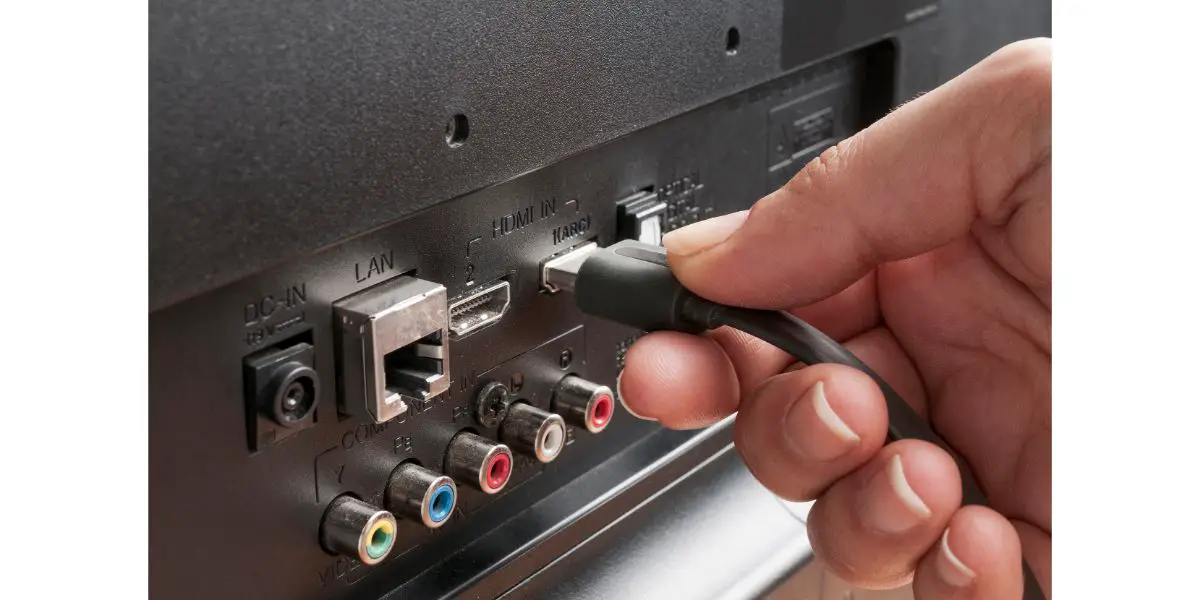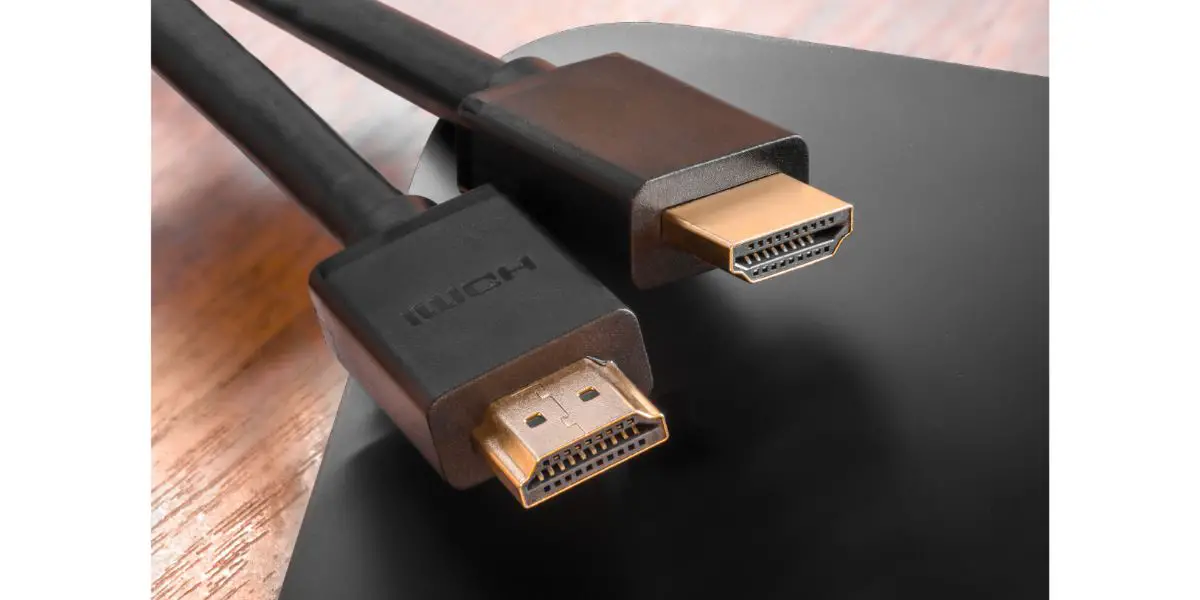Disclaimer: This post may contain affiliate links, meaning we get a small commission if you make a purchase through our links, at no cost to you. For more information, please visit our Disclaimer Page.
HDMI cables are a must-have for the modern world. You use them with your game consoles, TVs, laptops, and other devices. There are some common reasons why your HDMI cable keeps cutting out and a few fixes you can try.
Table of Contents
HDMI Keeps Cutting Out: Causes & Fixes
Is there anything worse than your HDMI cutting out and losing the signal you need? It can cause you to lose while playing a game or make you miss a big moment in a movie. It’s helpful to look at both the causes and fixes of the signal loss.
Reasons Why Your HDMI Keeps Cutting Out
The most common reason why your HDMI cuts out is that you chose the wrong length. While HDMI cables come in different lengths, not all lengths are suitable for all uses. If you choose a 12′ cable and run it across the room, it will likely lose its quality with time. When this happens, you’ll experience a lost signal and notice that your TV shows a blue screen.
There’s also a chance that you used a cheaper cable. The internet is full of so-called experts who warn you against paying too much for HDMI cables. While you don’t need a gold-plated cable, you will get what you pay for in terms of quality.
Cheap cables often work fine for a while but will eventually fail. This can happen in as little as six months but usually happens within a year.
Other reasons why your HDMI keeps cutting out include:
- Loose connection: If the HDMI cable is even slightly loose, it can lose its connection and cause your signal to cut out.
- Damaged cable: A damaged cable can cause just as many issues, especially if it’s bent or twisted.
- Lack of updates: You should update your devices as new software becomes available.
- Rusted port: Your HDMI ports can rust due to moisture in the environment and cause your signal to cut out.
- Resolution issues: Resolution issues can also make your HDMI cut out, especially if you have older devices.
- Improper storage: If you only use your cable every now and then, the way you store it can affect it and keep it from working the way it should.
- Wrong usage: HDMI cables should sit flat on a table or a similar surface, but you can also attach one to the wall.
5 Fixes for a Faulty HDMI Cable
Fixing your connection is easy because you can troubleshoot the problem. Always start with a look at the cable itself. Give it a gentle push to make sure that it fits in the port. You can also try wiggling the cable to see if it pops out or if it stays in place.
Don’t forget to look for signs of damage, too. Even a slight bend in the cable will keep it from working properly. You may need to replace the HDMI or change how you use it. Try hanging it on the wall or setting it on a flat surface.
1. Change Ports
TVs usually have at least three HDMI ports. They are usually on the back but can be on the front or sides of the TV. Those ports let you connect multiple devices and use them at different times. You need to hit the input button on your remote to switch between ports.
If your HDMI keeps cutting out when you use a specific port, change to a different one. You’ll want to use your device and see if the HDMI works before trying some other quick fixes.
2. Missing Updates
When you don’t have all of the right updates installed, you may suffer some HDMI problems. Checking for updates is easy and requires your remote and an internet connection.
Press the Settings button and go to Support and Software Updates. Then click on Check for Updates and Download and Install. Your TV will find all available updates, install them, and then restart. You can then see if the HDMI maintains its signal.
3. Adjust the Resolution
Some older TVs have problems with HDMI signals because they don’t work at high resolutions. With modern TVs, you don’t need to make any changes to the resolution. Your TV will adjust itself to display the proper resolution when you play games or watch movies.
Older TVs are different because the brands designed them to play at a lower resolution such as high definition instead of 4K. If the TV cannot use that resolution, it may produce some jitters or cause you to lose your signal. Changing the resolution of your TV is the best way to fix this problem.
4. Replace the HDMI Cable
In some cases, it’s easier to replace the HDMI cable than fix it. You should replace any cable that is over five years old. These older cables have a hard time working with modern bandwidths and often cannot play UHD or 4K videos.
Don’t hesitate to replace the cable when you see signs of damage either. The types of damage that affect HDMI cables and cause them to cut out can include broken connections on one end and kinks in the cable.
5. Change How You Power On Your Devices
Changing the way you power on your devices can also fix the problem. Unplug all of your devices from the wall and ensure you have the right cables plugged into each one.
Plug the device you want to use back into the wall first, then plug in your TV. For example, if you have a console hooked up to your TV, plug it in first and turn it on before you plug in and turn it on. This can help in some situations.
Can an HDMI Cable Go Bad Suddenly?
An HDMI cable will rarely go bad suddenly and without warning. You should notice some signs of the cable going bad before it actually does.
One thing to keep in mind is that you might have a bad HDMI cable right off the bat. If it doesn’t work as well as it should or at all when you first use it, don’t hesitate to return it. You may need to replace your cable for other reasons, too.
How Do You Know if an HDMI Cable is Bad? 6 Reasons
While an HDMI cable probably won’t go bad overnight, it can develop some problems with routine use. Check out some signs that your cable is bad and you need a new one.
1. No Sound
Trying to follow all of the action in a movie or TV show is nearly impossible without sound unless you turn on the subtitles. HDMI cables have insulated wires inside that transfer sound from your games and videos to your TV. A faulty cable can change what you hear.
If you’re lucky, you’ll find that the sound comes in and out. You might hear the noises with good clarity and then find that the sound drops for a few seconds before it comes back. As the cable worsens, the sounds will become muffled and then stop coming through.
2. White Spots
Seeing white spots is a common sign that you have a faulty HDMI cable. These white spots can appear on your computer or TV screen. They usually take the form of small stars and may shoot across the screen, but many people find that they look more like small sparks.
It’s easy to miss this sign because you might think you have some interference nearby or that the white spots are a type of white noise.
3. Lack of Voice Controls
Apple TV and similar devices have built-in voice controls that let you use them without relying on your remote. Not only can you adjust the volume and change inputs, but you can pause and rewind videos.
When your HDMI cable stops working, it affects these commands and keeps them from working. No matter what you say, your device will not respond. This often happens if any of the 19 pins inside the cable become bent or warped.
4. Blurry Images
Modern TVs and computers offer sharp contrast and great resolution. Whether you want to play the hottest game or enjoy an action flick, you can see everything. When your HDMI cable is bad, you may see some blurry images and lose the contrast.
If you used an old SLR camera, you might notice that your screen looks overexposed like your photos did. The images can also appear fuzzy or faded. Some even find that the colors aren’t as crisp or bright as they once were.
5. Image Issues
As a bad HDMI cable can cut out, it’s common that you see images coming and going. If the cable is defective, it will have a hard time displaying any images. Your screen will either appear blue or black.
Even if you can hear what happens, you cannot see the images. There’s also a chance that the image will appear for several minutes or longer and fade abruptly. Your screen turns black for a few seconds or longer before the image returns.
6. Bad Resolution
Another sign that your HDMI cable is bad is when your screen resolution is poor. These cables have pins inside that transport data and ensure that the sounds and images reach your TV or computer. While you can blame your screen resolution and check the settings first, bad resolution often goes along with a faulty cable.
It lets you know that the HDMI cable cannot send data to your device as well as it should. This often goes along with the white spots you see, making images appear overly saturated or too bright.
Conclusion
HDMI cables come in a range of prices, which makes it easy to find a new one that fits your budget. Ensure you know the common signs of a faulty cable and how to fix it. It’s helpful to learn why your HDMI cuts out and what you can do about it.


